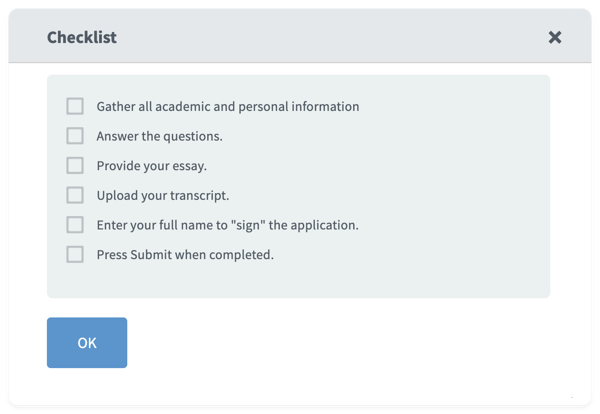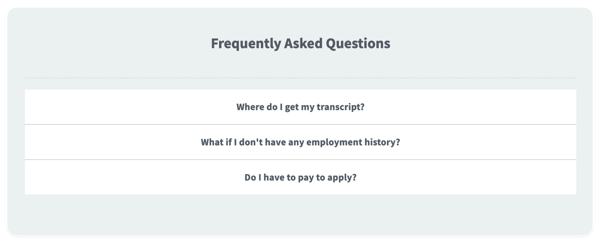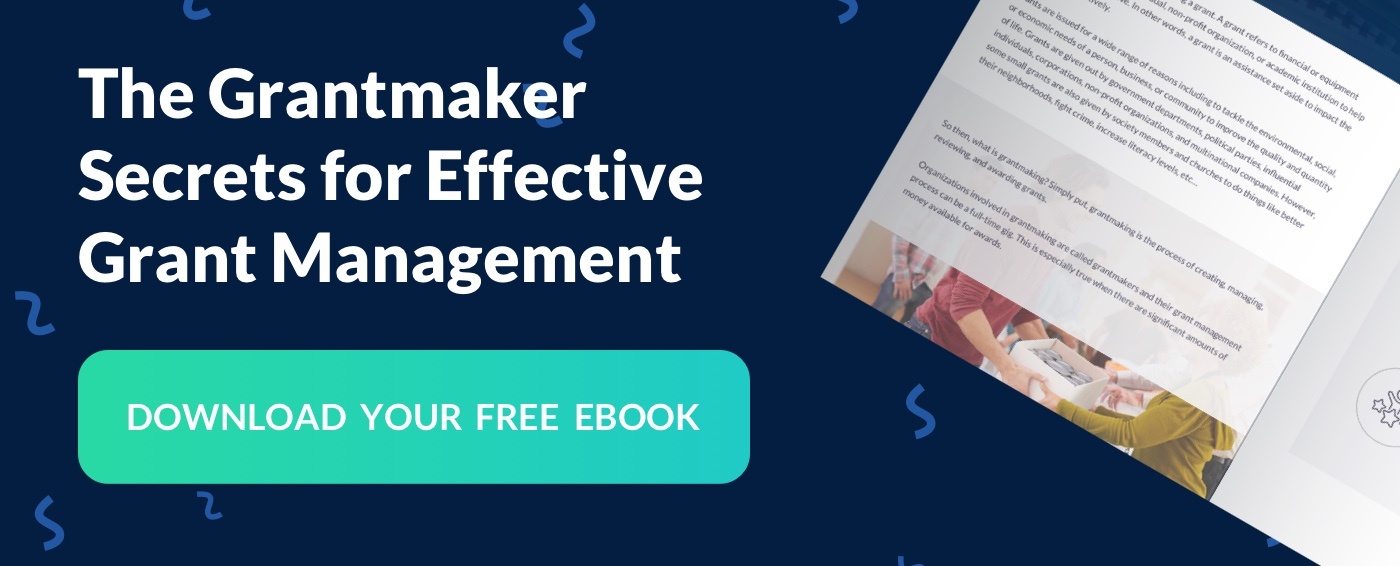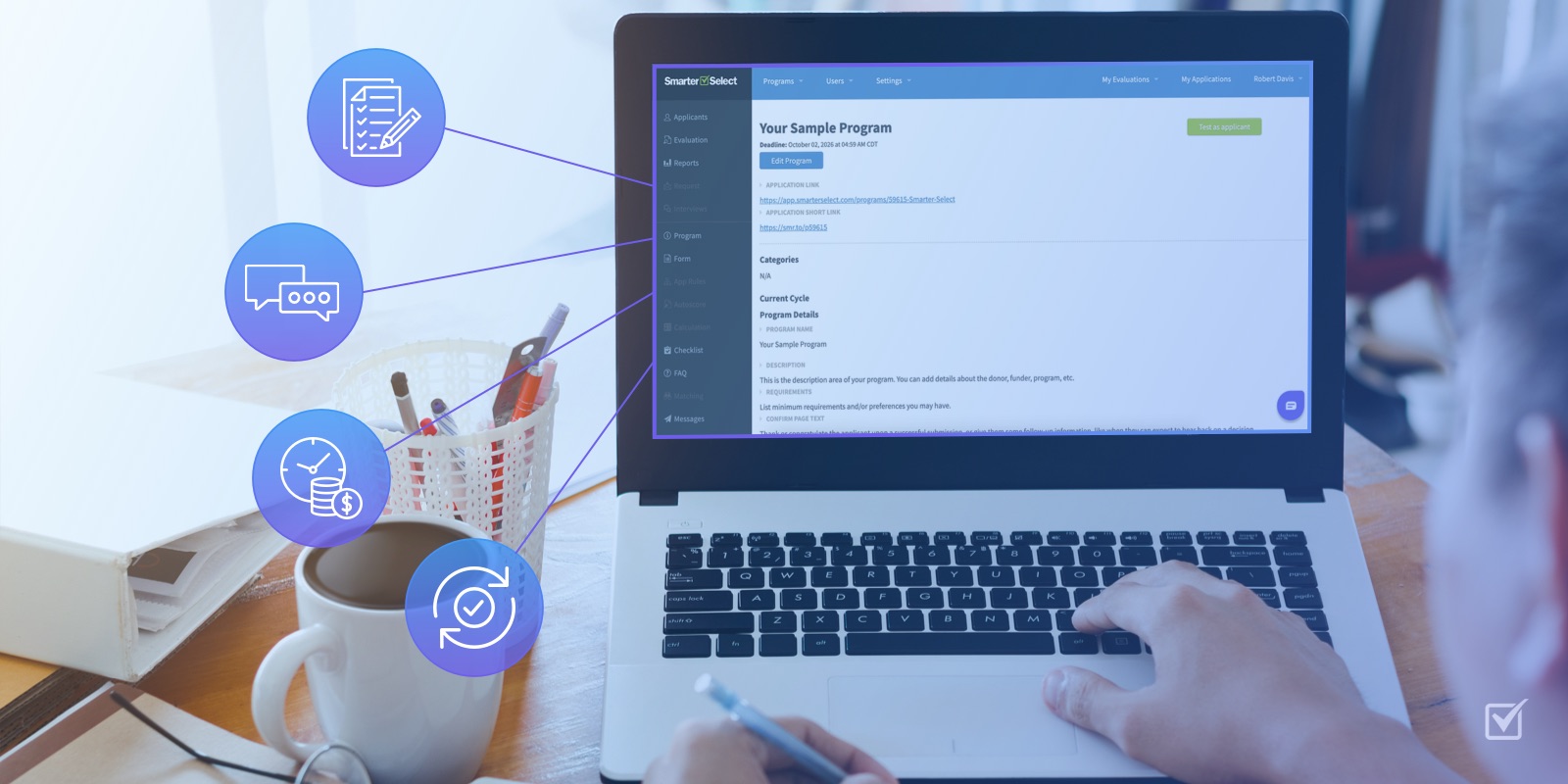Grantmaking: 8 Best Practices You Need to Follow
As with all things, there’s a right way and a wrong way to go about grantmaking. Get it right, and you can have a smooth grant application process, and award your recipients with ease. Get it wrong, and well, needless to say, you’ll have quite the mess on your hands. With that in mind, below we’re sharing 8 grantmaking best practices that can help you manage your grants easily and efficiently.
What is Grant Management?
Before we get to those best practices, we should probably address an important question for anyone new to the world of grants. That is, what exactly is grantmaking? Wiktionary may have said it best when they said the grantmaking definition is:
“The discretionary awarding of grants (especially by a foundation or other organization as a form or organized philanthropy).”
The grantmaker is the foundation or organization giving the funds, and hopeful recipients submit applications to them for consideration.
For organizations involved in grantmaking, the grant management process can be a full time gig. This is especially true when there are significant amounts of money available. Which brings us to another common question we see, which is what is grant administration? Effectively, this is the group of people in charge of choosing who receives the money.
They typically secure the funds, sometimes by way of fundraising or securing donors, then they develop the grant application, assemble a team of evaluators, and ultimately select a recipient. Without further ado, let’s discuss our top eight grantmaking best practices.
8 Best Practices for Effective Grant Management
1. Create a Solid Application and Pre-Qualify your Applicants to Minimize The Submission of Ineligible Applications
Transparency of key requirements is perhaps the most important thing to consider in how to manage grants. You want to make sure that it’s clear from the outset who you are considering giving the money to. One way to go about this is to include information about qualifications for consideration on your website to quickly filter out ineligible applicants.
The grant management software you use should also pre-qualify your applicants with questions that filter your pool further to ensure that only eligible applicants take the time to go through the process of applying.
As a result, individuals and companies that are ineligible won’t waste their time or yours, and it will signal the people who are eligible that they are in the right place. This will ultimately help reduce the amount of time and energy you will have to spend vetting the applications you do receive.
It’s also a good idea to start thinking about the values and principles you want the chosen recipient to adhere to. Not sure where to begin? They should mimic the values and principles of your own institution.
Pro Tip: Match applicants to your program based on tags/key indicators of who you would like to give the money to. This will restrict your grant’s visibility to only applicants that should apply. If you’re giving out more than one grant, grant matching can also help you make sure that the right people are applying for the right grant.
2. Let Applicants Preview the Application Before Filling it Out
Doing this will help your institution be certain that only people that are committed to the process are filling out an application. Applicants that aren’t serious about trying to receive a grant will likely opt-out if they feel the application is too long or too difficult.
3. Provide a Checklist of Key Items At the Beginning
 If there are documents you need your applicant to have ready before filling out their application, let them know what they are upfront. For example, if you need references or a line-item budget document that expresses why they’re applying for the grant, putting that in a checklist allows the applicant to have all materials ready in advance before actually applying. Doing so will increase the number of applicants that finish their application.
If there are documents you need your applicant to have ready before filling out their application, let them know what they are upfront. For example, if you need references or a line-item budget document that expresses why they’re applying for the grant, putting that in a checklist allows the applicant to have all materials ready in advance before actually applying. Doing so will increase the number of applicants that finish their application.
4. Provide Question Level Help
To avoid issues with your application, provide tooltips that give more context to your questions. This helps applicants understand exactly what you’re looking for as they answer each question.
5. Create an FAQ section
 This tip, like the one above, will help you with handling questions from candidates regarding your application. Rather than addressing hundreds of emails, you can direct all of your queries to one FAQ section that takes care of it for you. This and the question level help are the grantmaking best practices that will save you untold amounts of time with troubleshooting/applicant support.
This tip, like the one above, will help you with handling questions from candidates regarding your application. Rather than addressing hundreds of emails, you can direct all of your queries to one FAQ section that takes care of it for you. This and the question level help are the grantmaking best practices that will save you untold amounts of time with troubleshooting/applicant support.
6. Communicate with Applicants
While it may not be feasible to send personalized correspondence to everyone that is applying for a grant with your institution, that doesn’t mean you shouldn’t be communicating with them regularly.
It’s a good idea to choose grant management software that allows you to send emails, texts, reminders, etc… to your entire pool of applicants. With this ability, you can let your pool of hopeful candidates know when deadlines are approaching, what elements of the application are the most critical, and simply keep them informed about what’s going on with the grant.
7. Setting up a Grant Lifecycle / Timeline
There is an old saying that goes something like “failing to plan is planning to fail.” The reason this is on our list of grantmaking best practices is we want you to succeed! Plan out every element of your grant, and put it on a reasonable timeline so that you can create deadlines, and then inform your applicants about them. Think about things like:
- How long you need to secure the funds for the grant
- How much time you want to give candidates to submit their applications
- If there are specific dates you want to have your award announcement line up with, such as your company’s anniversary or the national date of a cause (i.e. World Obesity Day for a sustainable food systems grant)
- The amount of time that will be needed for evaluating applications (this will help you determine how much support personnel you will need as well)
Once you have a timeline of events, you can start planning out when to announce the grant, when to start recruiting candidates to apply, and so on.
8. Use Grant Management Software
We’ve alluded to this more than once in this post, but using grant management software is the key to a smooth grantmaking process. With software, you can manage several thousand applicants, build an application quickly without needing to code or program, and you can provide a seamless user experience.
Enter SmarterSelect, the grantmaking administration’s secret weapon for finding the perfect recipients for their grants. From stellar customer support to a top-notch community forum that shares helpful ideas, we make it easier than ever to run a grant program. But don’t take our word for it. Click here to schedule a demo and find out for yourself just how efficient our software is!
FAQs
1. What are the best practices for effective grantmaking?Here are the top best practices for effective grantmaking:
- Create a solid application and pre-qualify your applicants to minimize the submission of ineligible applications
- Let applicants preview the application before filling it out
- Provide a checklist of key items at the beginning
- Provide question-level help
- Create an FAQ section
- Communicate with the applicants
- Setting up a grant lifecycle
- Use grant management software.
For setting up a grant lifecycle, you need to plan out every element of your grant, and put it on a reasonable timeline so that you can create deadlines, and then inform your applicants about them. Consider things like:
- How long do you need to secure the funds for the grant?
- How much time do you want to give candidates to submit their applications?
- If there are specific dates you want to have your award announcement lined up with, such as your company’s anniversary or the national date of a cause.
- The amount of time that will be needed for evaluating applications.



